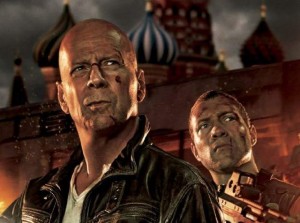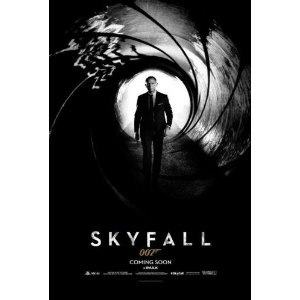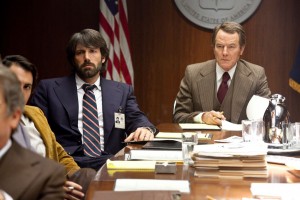A Good Day to Die Hard
Posted on February 13, 2013 at 6:00 pm
 Chases. Explosions. Guns. Crashes. Wisecracks. Punches. Repeat. Repeat again. Yes, it’s the fifth “Die Hard” movie.
Chases. Explosions. Guns. Crashes. Wisecracks. Punches. Repeat. Repeat again. Yes, it’s the fifth “Die Hard” movie.
Bruce Willis returns as cop John McClane and this time the setting is Moscow. Though he repeatedly says throughout the film’s zippy 90 minutes that he is on vacation, McClane is in Russia to help his estranged son Jack (Australian actor Jai Courtney of “Spartacus”), who has been arrested for attempted murder. It turns out that Jack, who uses his mother’s last name and has not spoken to John in years, is actually under cover for the CIA. Both the Russians and the Americans want a “file” that has been hidden away by a man named Komorov (Sebastian Koch), who is about to go on trial. It contains incriminating information about a high-ranking Russian official. He wants it destroyed. The Americans want to use it to discredit him. The stakes are very high. The chases are very fast. The explosions are very big. The repartee is….not great, but thankfully minimal.
Unlike his “Expendables” colleagues Arnold Schwarzenegger and Sylvester Stallone, whose 2013 action film releases managed to be both lackluster and overheated, with so much work done on their faces they looked like bad copies of Madame Tussaud’s replicas of themselves, Willis is every bit as good and better than he was in the first “Die Hard” film a quarter century ago. Regrettably, we get only a glimpse of the fabulous Mary Elizabeth Winstead, briefly returning as John’s daughter, Lucy, to drop him at the airport and admonish him to behave (as if!). But Courtney is well-matched to Willis, with their bullet heads, truculent glares, and cocky pleasure in their own outrageous badassery. John may pause for a brief “Cat’s in the Cradle” reverie with Komorov in between dodging bullets, as they ruefully reflect on their failures as fathers, but shortly afterward, as John and Jack awkwardly observe a tender parent-child reunion, they agree that nothing like that would work for them. “We’re not a hugging family,” Jack says. “Damn straight,” agrees his father.
The locations are exotic, and the chase scene through the streets of Moscow is wilder than any since the last “Die Hard.” The titles may be getting increasingly labored but Willis and the stunts make it work.
Parents should know that this film has constant peril and violence. Many characters are injured and killed, and there is a lot of shooting, punching, chases and explosions, some graphic and disturbing images, and strong language.
Family discussion: How are John and Jack alike? Why was Jack so angry with John? What changed his mind?
If you like this, try: the other “Die Hard” movies, especially the first and third




